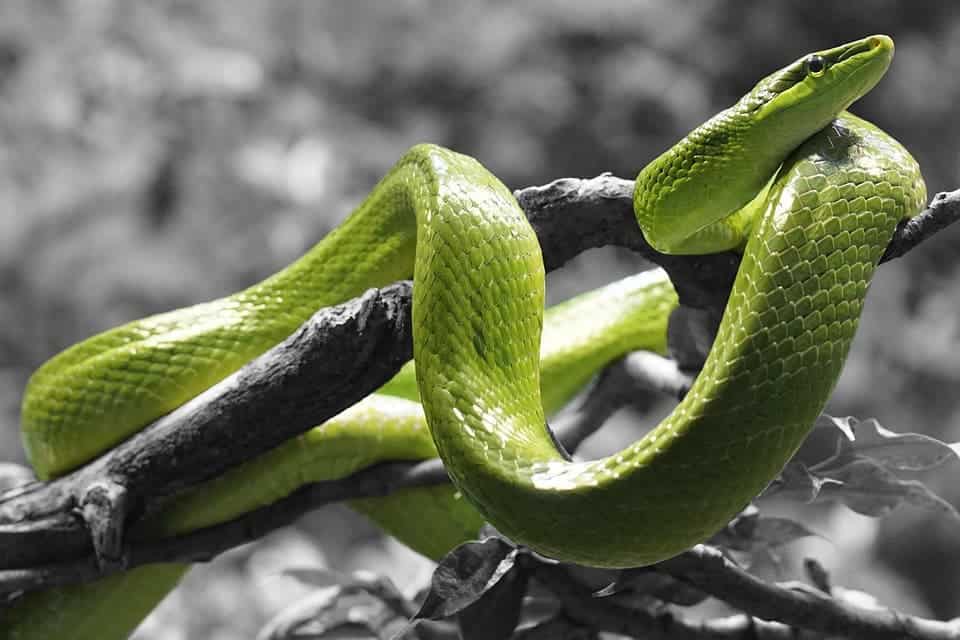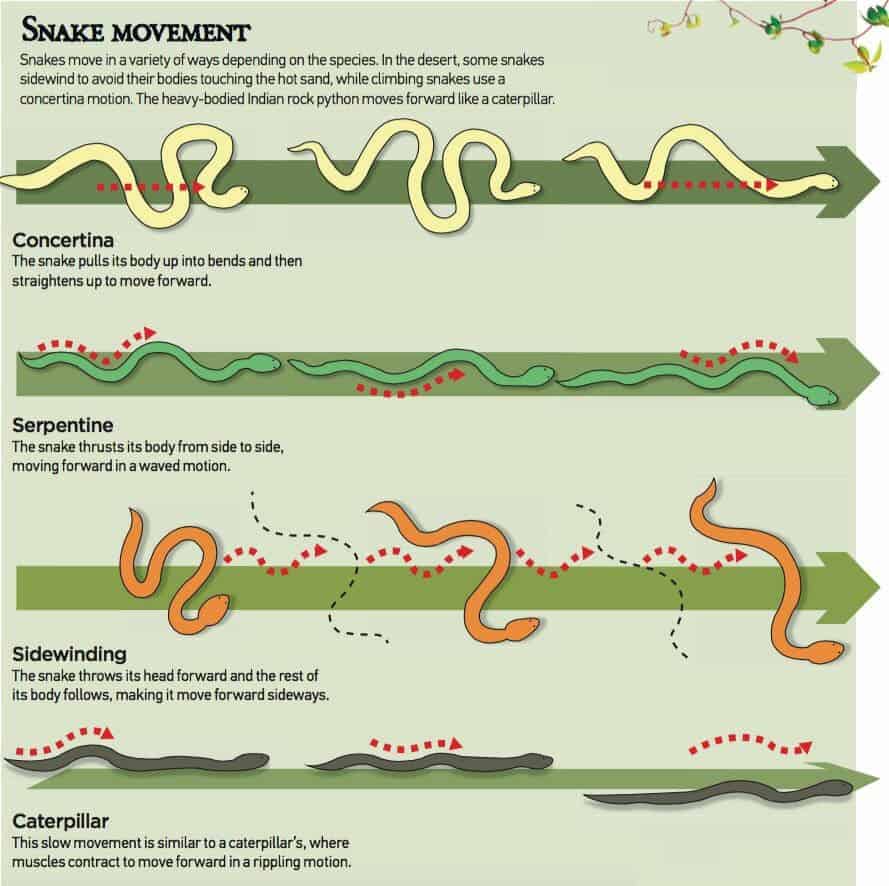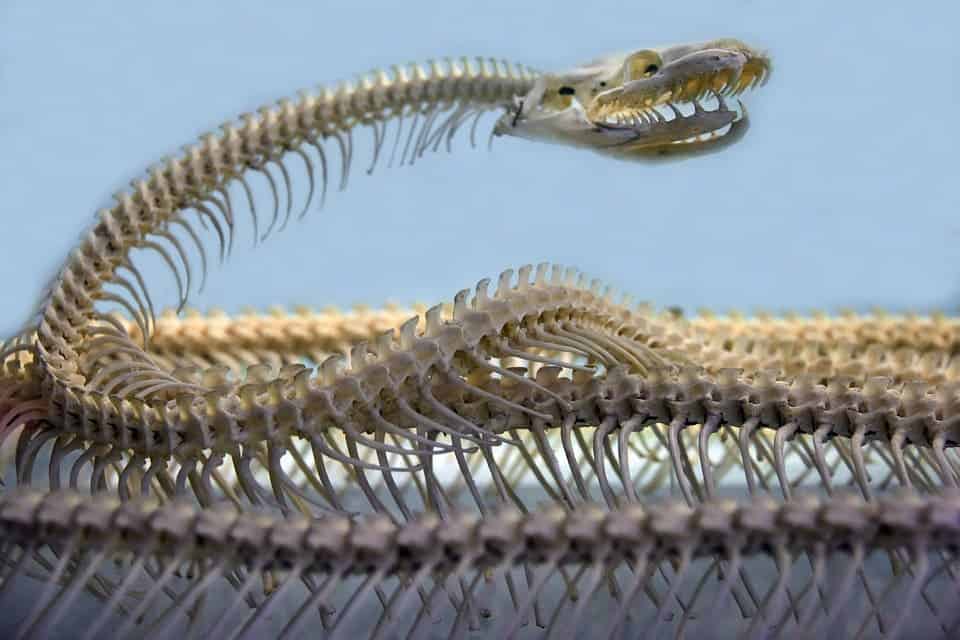Unbeknownst to most people, snakes have the ability to crawl in a straight line without any S-like undulations. Despite the first study on the matter being published in the 1950s, it’s an ability we still don’t properly understand. New research from the University of Cincinnati comes to plug that hole in our knowledge.

Be it swimming, climbing, and crawling, snakes typically move about by bending into S-like coils or using the tip of their tail to push off objects. But snakes hide an ace up their sleeve, despite lacking sleeves. This might surprise (and further scare) you in a chance encounter. They can also move forward in a straight line without any wiggling, bending, or squiggling.
Known as “rectilinear locomotion”, which is fancy for ‘moving in a straight line’, this ability allows the murderous meat tubes to crawl in narrow burrows in search of prey. We know they do it, but we don’t really know how, so University of Cincinnati biologist Bruce Jayne set out to study the mechanics of this type of movement.
S-s-slitherin’
“It’s a very good way to move in confined spaces,” Jayne says about rectilinear locomotion. “A lot of heavy-bodied snakes use this locomotion: vipers, boa constrictors, anacondas and pythons.”
Jayne has previously studied the mechanics behind three other kinds of snake movement called concertina, serpentine, and sidewinding locomotion. Rectilinear motion, he says, has received less attention both from himself and other researchers, so it was particularly poorly understood.

Image via Pinterest.
Most research on the subject was performed in 1950 by biologist H.W. Lissmann. He hypothesized that snakes combine patterns of muscle movement with their loose, flexible belly skin to scoot forward without having to bend their spine. However, Lissmann’s findings were never expanded upon, so, Jayne adds, “it’s been almost 70 years without [rectilinear] locomotion being well understood.”
Together with graduate student and co-author Steven Newman, Jayne put Lissmann’s hypothesis to the test using modern equipment. The team worked with boa constrictors, big-bodied snakes that are known for traveling in a straight line across forest floors. They filmed the snakes’ movements across marked horizontal surfaces with high-definition digital cameras and used electrodes to record the electrical impulses generated by groups of their muscles. The resulting electromyogram (similar to an EKG but for your muscles — ‘myo’ — instead of the heart) revealed that rectilinear locomotion requires a close coordination between the snake’s muscles, skin, and skeleton.
[Read More: For beautiful snake photography and additional information, give our chat with wildlife photographer Marius Iancu a read]
The researchers also added dots on the sides of the snakes to use as a reference for the subtle movements of their skin. The video revealed that as snakes inch forward, the skin on their belly flexes much more than that over its back and ribcage. Similarly to treads on a caterpillar track, the scales on their belly provide traction with the ground. After the animal is securely lodged in place, muscles pull its internal structures forward in an undulating pattern. Groups of muscles constrict starting from the head towards the tail in sequence to maintain this movement pattern, and key to the whole process are costocutaneous (from ribs to skin) muscles.

Image credits Denis Doukhan.
Snakes are able to maintain this motion with a high degree of fluidity at high speeds, the team reports, allowing them to move seamlessly along at any speeds.
“The vertebral column moves forward at a constant rate,” Newman said. “One set of muscles pulls the skin forward and then it gets anchored in place. And opposite antagonistic muscles pull on the vertebral column.”
Still, the authors note that rectilinear locomotion seems to be a ‘low gear’ for snakes, who use it chiefly when they’re in a relaxed state. When prodded or startled, they will generally revert to concertina or serpentine motion.
Belly-walking
Rectilinear locomotion brings certain advantages to the table, especially for predators such as snakes that hunt rodents and other animals who burrow underground for safety. Newman explains that “you can fit in much narrower holes or tunnels by moving this way” compared to the traditional S-like slithering — creating a powerful selective advantage for the trait in the ancestors of snakes, who were also borrowers, he adds.

Image via Wikimedia.
Overall, the team reports that Lissmann’s findings in 1950 were largely correct. However, he also “hypothesized that the muscle that shortens the skin was the mechanism that propels a snake forward.”
“He got that wrong,” Jayne said. “But given the time he conducted the study, I marvel at how he was able to do it. I have tremendous admiration for his insights.”
The research provides a lot of material for robotics engineers trying to design better snake-like robots. Such constructs are uniquely suited to inspect pipelines (as they can easily fit inside them) or work with underwater equipment (as their sub-like shapes allow them to better withstand high-pressures). Alternatively, snake-like rectilinear motion could be a tremendous boon for search-and-rescue robots that have to grapple with debris and confined spaces when searching for survivors in collapsed buildings.
Jayne plans to continue his work with snakes in the future. By testing the limits of their mobility, Jayne hopes we can understand more about snake’s motor controls — which in turn can help us elucidate how we humans execute complex, coordinated movements.
“Even though all snakes have the same body plan, there are fully aquatic snakes, snakes that move on flat surfaces, snakes that move in a horizontal plane, snakes that climb. They go everywhere,” he said.
“And the reason they can go everywhere is they have so many different ways of controlling their muscles.Even if the animal had the physical strength to do something, it wouldn’t necessarily have the neural control. That’s pretty intriguing. “
The paper “Crawling without wiggling: muscular mechanisms and kinematics of rectilinear locomotion in boa constrictors” was published in the Journal of Experimental Biology.


